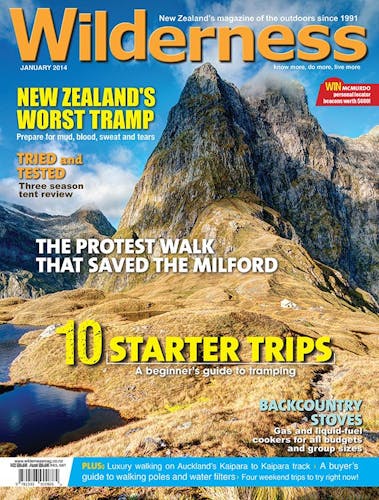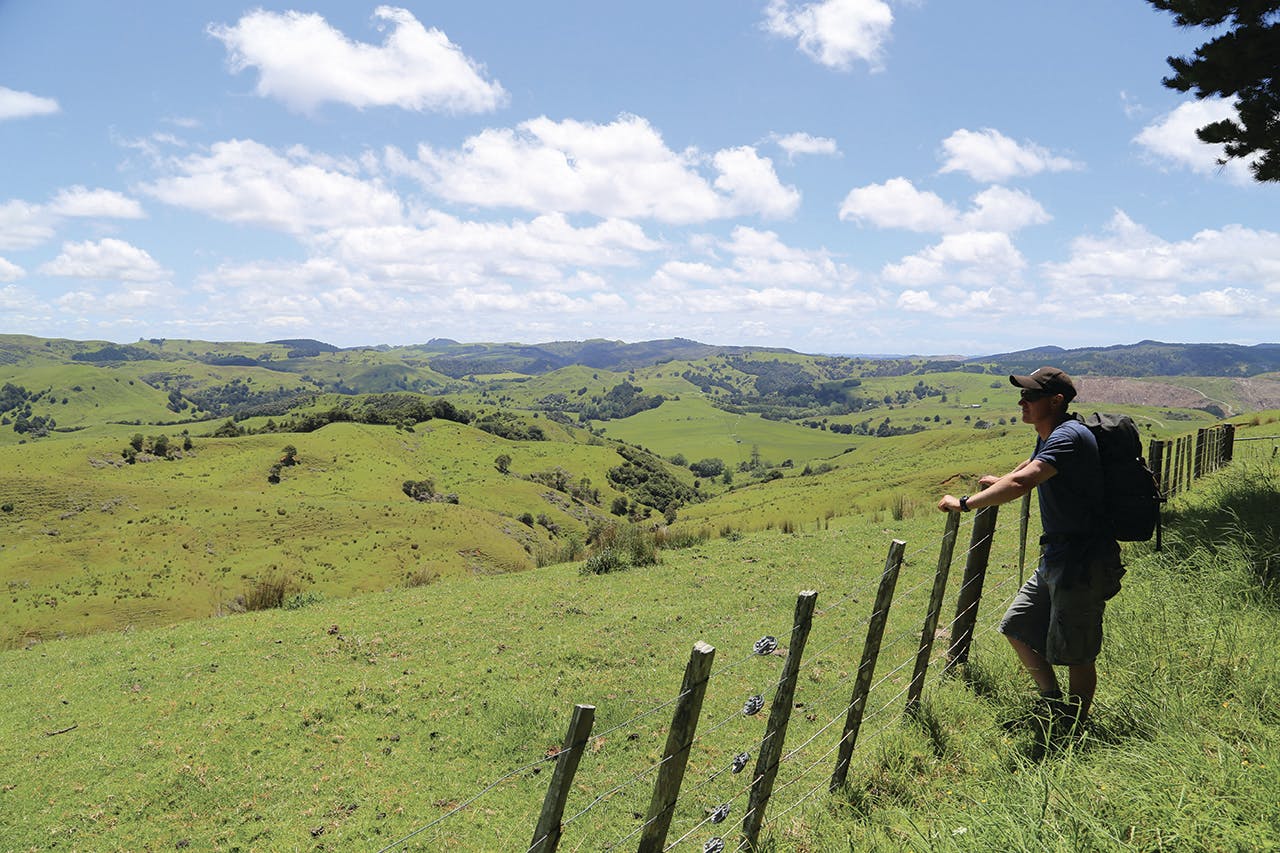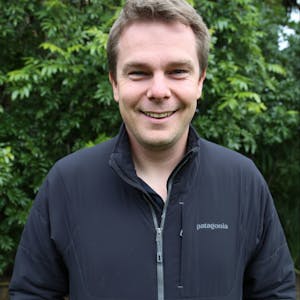Few venture to Glorit. Most have never heard of it. Yet it’s just an hour from Auckland’s CBD and is in an area of such rugged beauty that Matthew Pike couldn’t resist a peek
I’ve never attempted a private walk before. I’ve always imagined you’d be molly-coddled and patronisingly asked if you know how to read a map or whether a 20m descent may be ‘hard on your knees’. My ego also led me to believe that a hut or tent is the only luxury I’d need, DOC land is the most beautiful and that I certainly don’t need anyone preparing food for me.
How wrong I was. Once I’d spent a day or two stomping my prejudices into paddocks and forest tracks, I realised that, deep within my psyche, there’s nothing I want more after a day’s tramp than to enjoy a hot shower and food that isn’t from a packet. And, considering the weather throughout the three days I spent on the Kaipara to Kaipara Experience consisted of scalding sweat-inducing sunshine, a shower in the evening was wonderful and, for those who could smell me, essential.
The K2K, based in sleepy Glorit an hour north of Auckland, is a kind of Heaphy Track of private walks – variety is a key feature, as it changes vastly from one day to the next.
The walk itself consists of lush paddocks, pine forest and calm rivers on day one, native bush and panoramic views on day two and a stroll along the estuary edge on day three.
Accommodation switches between a grand, luxurious homestead, dorm beds not dissimilar to a backcountry hut and a classic Kiwi farmhouse with sunsets to die for.
The food is a constant: constantly brilliant. Whether it’s barbecued venison, lamb tagine or icing-happy carrot cake, it’s worth walking 100km for, let alone the 15km the track demands on any given day.
That’s not to say it was easy. The landscape is rugged and six hours of sun-on-head is enough to make anyone need a lie-down. But it was manageable – neither a doddle for the fit or a heart churner for the unfit.
I arrived with my better half on the Friday evening. We followed the directions, looking for twin arches which, in this instance, signalled the roof of the immaculate homestead. Inside is vintage furniture, a piano and a fridge full of gorgeously prepared food. Outside is a pristine garden adorned with flowers, vegetable patch, pond and chairs that looked ready for afternoon tea in a Victorian costume drama.
We were the first of the group to arrive and had the place to ourselves until Shane came to say hello. Shane and Jenny are the main hosts. They’ve turned the homestead from a mere shell to the place of country grandeur that it is today. They’ll have a yarn and a drink with you if you wish, or leave you to it if you don’t. Their hospitality on nights one and three and that of Stephen and Clare on night two make this a special experience.
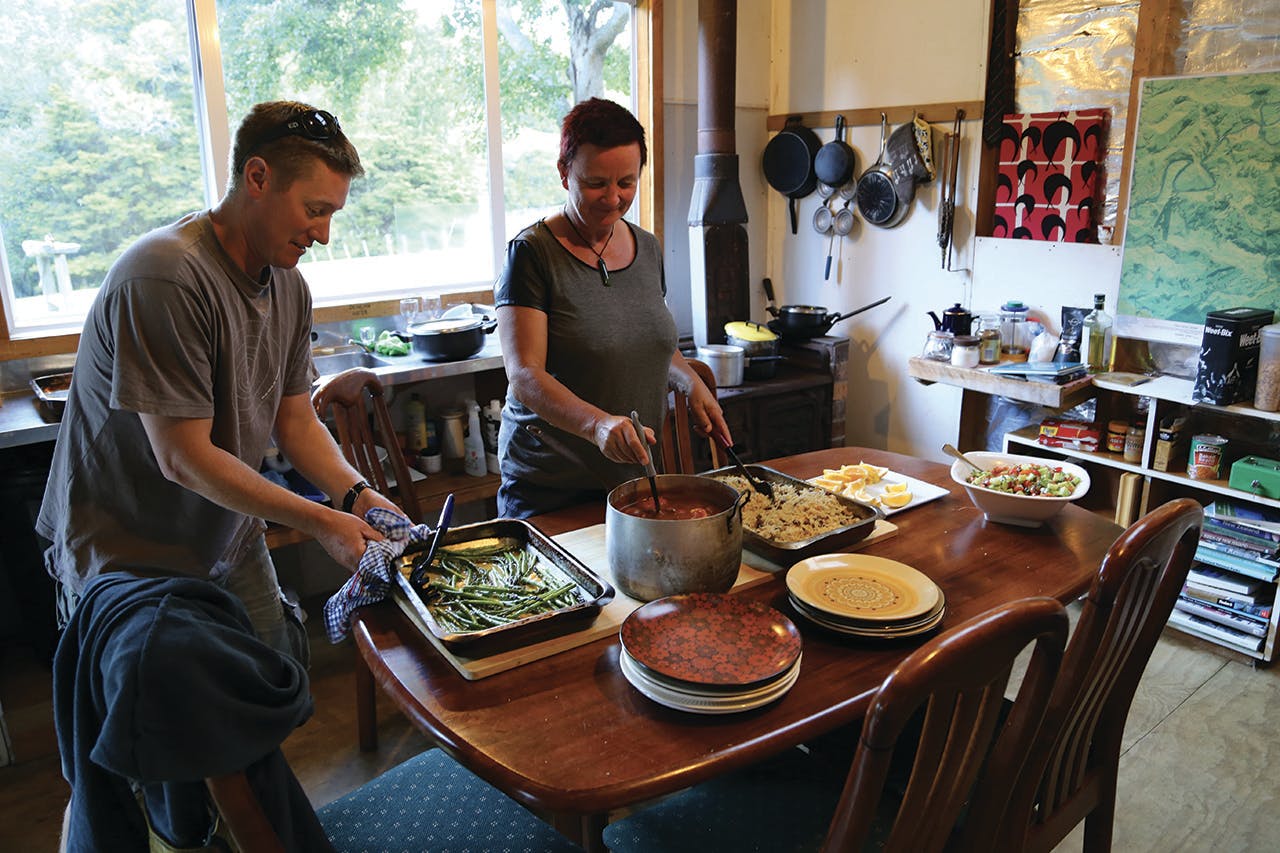
Preparing a lamb tagine feast on the second night. Photo: Matthew Pike
After meeting our fellow walkers, filling our stomachs to breaking point and sleeping soundly, we were eager to start the following morning.
We lifted our big packs into Shane’s trailer and waved bon voyage to them. We wouldn’t be seeing the bags again until evening when they would miraculously reappear at the hut.
We were driven to the start at Kaipara Flats – a village from a bygone age. We began in lush native forest and then climbed through paddocks at first then through pine and mixed forest.
Soon we reached the first proper lookout – The Three Sisters. It was hot and we welcomed the shade from these three grand kauri trees as we feasted on cashews and admired the view back towards Kaipara Flats.
We continued through the forest, taking a quick detour to see a waterfall trickle down a rock face, as if the rock itself was a saturated sponge, gently squeezing water into the pool below.
Another stifling, windless trek led us to Ned’s Lookout. The breeze was a godsend. It was also the first time I caught a real sense of the surrounding landscape. Despite the dry weather, the paddocks were lush and the rugged hills rolled until they dropped into the distant Kaipara Harbour.
A lot of ill is spoken of paddocks as far as tramping is concerned. New Zealand’s so wild that, to many, it doesn’t feel like true countryside unless you’re surrounded by native trees or alpine summits. But there are many advantages to a farmland setting. For a start, it can be pleasing to the eye in its own right. The open landscape offers constant views and easier terrain on which to walk and the outline of treeless hills is more pronounced than that of forest-covered hills. I’m not saying the landscape looks better without trees, but hill farms certainly provide their own charm.
We followed an easy ridge all the way down to the Hoteo River where we had lunch, most of us huddled in the shade of a small tree. The Hoteo looks like a kayaker’s dream: it flows gently and meanders so extravagantly that some of its bends are close to joining each other. The track followed the river pleasantly for a couple of kilometres before rather cruelly taking us on one more sun-drenched slog to a ridge on the side of a hill. We found ourselves pausing in every shady spot, savouring the relative coolness.
We soon descended from the ridge and were delighted to reach the accommodation: a hut with two bunk rooms, a separate toilet and shower and a further separate kitchen and barbecue area. Nearly all of us at one stage took a dip in the cool swimming hole in the nearby stream, and slumped on giant bean bags.
Then came the food. Tonight it was huge helpings of lamb tagine and couscous before we slumped once again into the bean bags around the camp fire. We were clean, full, worn out and happy.
I awoke at eight and thought I’d overslept. I went outside to find no-one around. They hadn’t left without me, but were still fast asleep. The sun had taken it out of everyone, but there was plenty more to come.
We set off at the rather lazy time of 10am with a surprisingly steep climb up and over a hill before a fantastically gentle ridge brought us down to the Hoteo River where the forest began. It was already hot and we had a break before starting the forest section. It was so refreshing to be walking in the cool shade and the forest in this part of the world is rich with natives like kauri, rimu, puriri, taraire and nikau palms. It’s an exotic place to wander through.
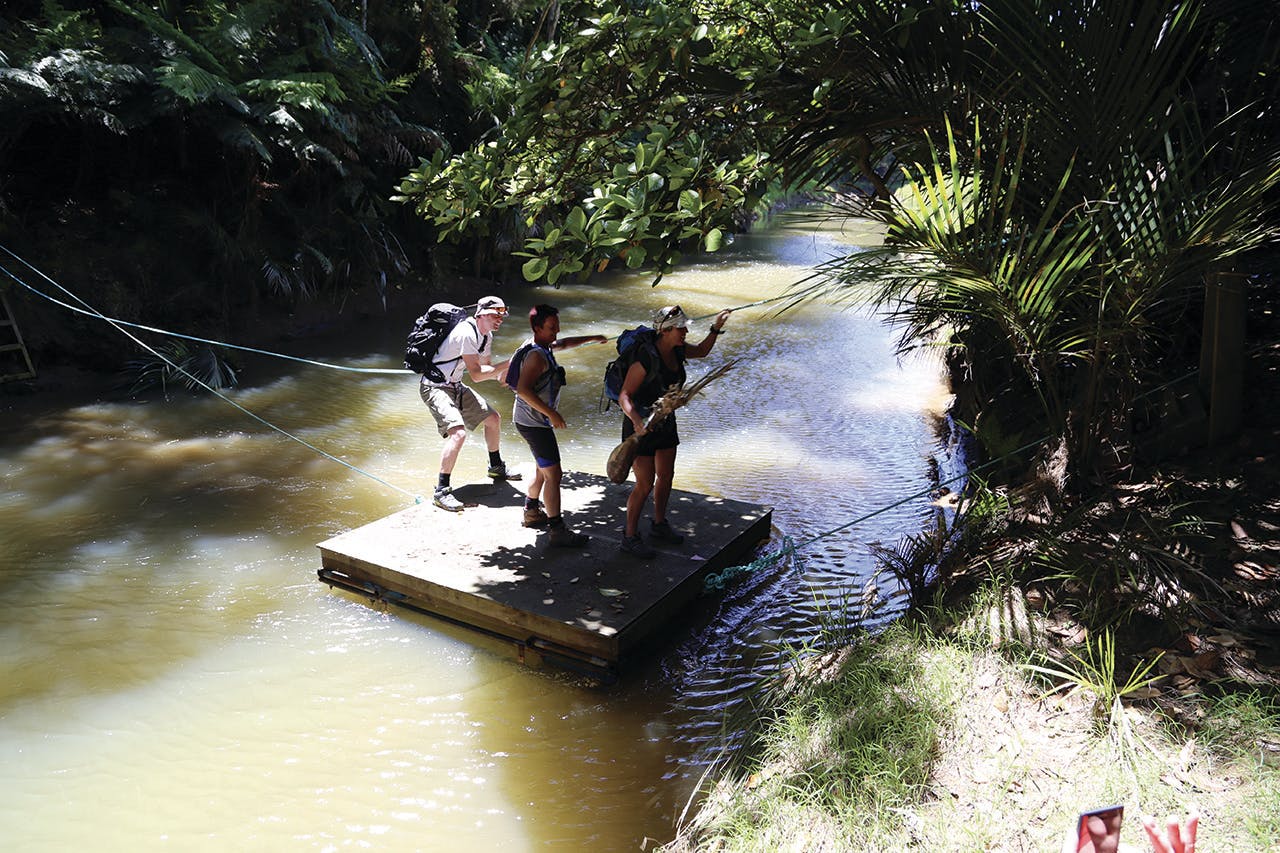
The pontoon crossing. Photo: Matthew Pike
There’s one river crossing at which a pontoon has been constructed. Make sure you trust the people you’re walking with or, if they’re a particularly nasty bunch, they may try and hoist the pontoon back from the edge as you’re trying to step off.
After this, the climb begins. It’s steep in places and features the odd clearing where old human settlements would have been. When at last you reach the top, a tall wooden platform takes you up to canopy level. From here there is a fantastic panorama of the Kaipara Harbour to the west, with North Head and South Head almost meeting in the distance, and the rolling rugged farmland to the east with the Hoteo River winding through steep valley walls. The cabbage trees were in flower too which was a wonderful spectacle from this height.
A short sharp descent took us to SH16, where we had the choice of walking the final 4km over gently undulating farm tracks and paddocks or taking a lift to the accommodation. This is another great perk of a walk such as this. If members of your group are suffering with a bad knee or blister, they can miss out chunks of the track. Several of our party had skipped the day’s walk because they didn’t feel up to it. They had a relaxing day slurping coffee in Warkworth. It’s great to be able to do this if you’re not 100 per cent sure you can hack three days on the trot. In the backcountry a break’s not often possible.
We chose to walk. It’s not the finest 4km stretch but it makes reaching the farm house more rewarding.
The accommodation is not as grand as Mataia Homestead but has all the luxuries of a good sized farm house, including a large outside eating area from which you catch excellent sunsets.
It was the 60th birthday of one of our party and we celebrated with tender barbecued venison and sirloin steak, all washed down with bottles of bubbly which we’d brought ourselves.
Another overindulgent night’s sleep and a good breakfast of eggs, toast, cereal, yoghurt and coffee led to another late-ish start. The sun was out again and we knew the final day was the easiest.
The first section was over paddocks and it wasn’t long before we dropped to the estuary edge, where trees lined the track so we were mostly in the shade. Hosts Shane and Stephen joined us for the final day. They don’t normally have the time to do this, but took the rare opportunity to search for kiwis. Shane and Jenny’s family have set up a kiwi sanctuary on their property and currently have 13 birds living there. It’s a big area though, and the kiwi are hard to locate.
We stopped for lunch at Mataia Bay, a lovely stony beach with views across the harbour to the bizarre-looking sculptures towards Kakanui Point to the south.
We picked ourselves back up for the final slog to the finish over a wonderfully pleasant series of tracks through dense foliage seemingly miles from everywhere.
Soon the arched roof of Mataia Homestead hove into view and a couple of paddocks later we’re lying in the immaculate gardens congratulating each other on a job well done.





